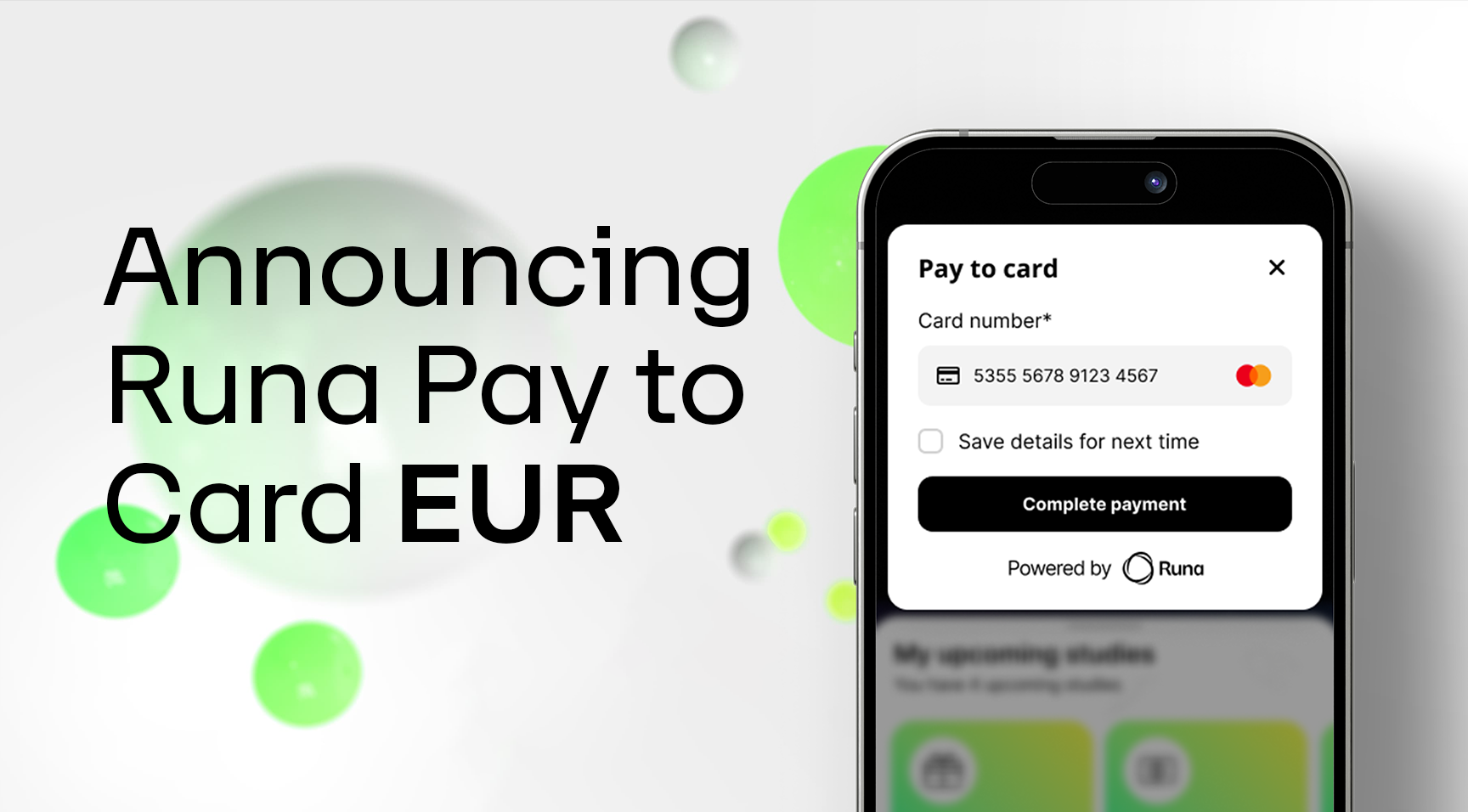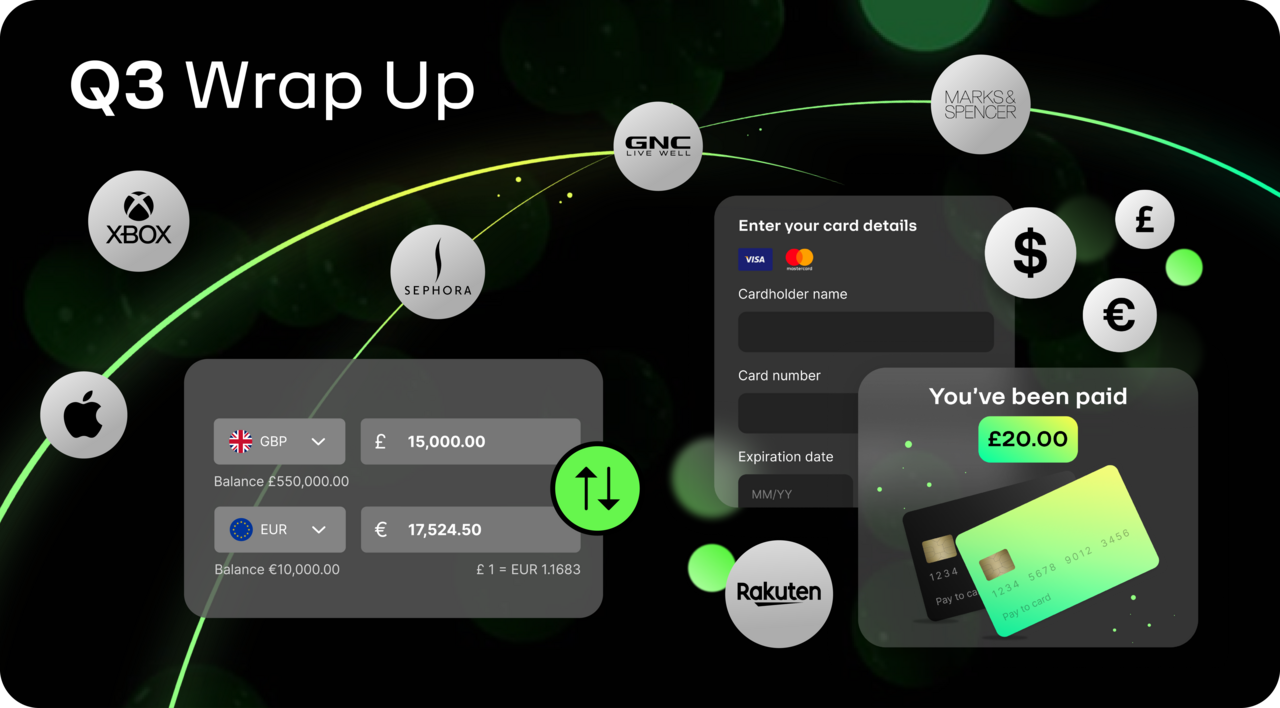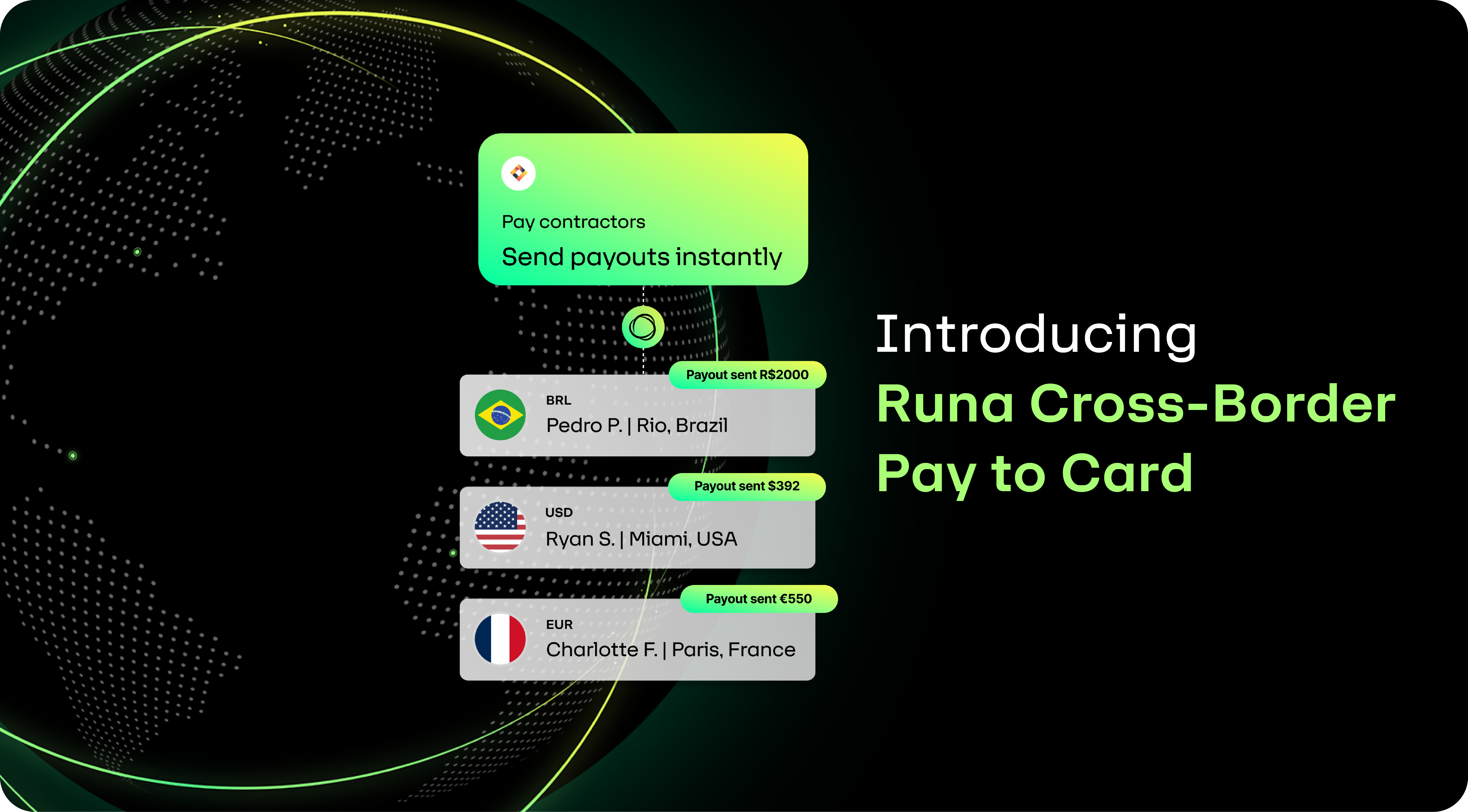Exciting news from the Runa team! We’ve introduced webhooks into the Runa API, a game-changing way to set up notifications in your app to streamline processes.
We’re here to guide your understanding of this technology and how you can use it to optimize your service.
What is a webhook?
Let's start with the basics. Imagine you have a mailbox at your house. Normally, you check the mailbox daily to see if there's any new mail. But what if your mailbox could notify you the moment mail arrives? That's essentially what a webhook does.
In simple terms, a webhook is a way for an application to send real-time data to another application as soon as a particular event occurs. It's like a notification system that automatically sends updates when something happens, rather than having the other application check for updates periodically, ensuring they stay in sync without any manual intervention.
How webhooks elevate your app
Webhooks transform how you interact with your apps in a few game-changing ways.
-
Instant alerts and real-time updates: Time is precious when you're trying to ensure your app runs smoothy. Using webhooks, you can enable immediate notifications of messages, network changes, or transaction alerts, helping you avoid any lag times.
-
Personalized experiences tailored to your digital world: Webhooks help your apps talk to each other and react right away, creating a tailored digital environment that adapts to your needs and preferences.
-
Effortless integrations to simplify workflows: Webhooks facilitate seamless integrations, enabling automatic information-sharing across different apps without requiring constant manual intervention.
How do webhooks work?
You might be curious about what goes on behind the scenes. How does it all work? Webhooks function through a straightforward yet powerful mechanism.
- Initiating an Event: An event occurs in one application (like a new message, a payment confirmation, or any significant activity)that triggers the webhook.
- Sending a Payload: The initiating application sends a payload—the content of a data packet—to a predefined URL, which is the digital address of the receiving application.
- Receiving and Processing: The receiving application processes the incoming data and takes the necessary actions, such as updating information, sending notifications, or triggering other events.
Runa Webhooks: Your path to enhanced efficiency
With the latest async version of the Runa API, webhooks are now at your fingertips. Use webhooks for order completion to enhance the efficiency of your order reconciliation process.
Dive into our webhooks documentation page for detailed payload examples and specifications, or get started configuring a webhook in Runa today!
Setting Up Your Webhook: A Quick Guide
- Access webhook settings: In your Runa account, navigate to the API menu and select ‘View webhook’. This opens your webhook portal, powered by Svix.
- Establish a new endpoint: Once in the webhook portal, click ‘Add new endpoint’.
- Designate the endpoint: In the ‘Endpoint URL’ field, input the URL where you want event updates to be sent. Optionally, you can add a description of the endpoint
- Tailor your notifications: Open the Message Filtering menu and select the events you want to add to your endpoint.
- Complete setup: Click Create to save your new endpoint.
Your Next Steps
Now that you understand webhooks, it's time to put them to work.
So, dive in to the docs and start exploring the world of webhooks with the Runa API. And keep an eye out for more Runa webhooks coming soon!



